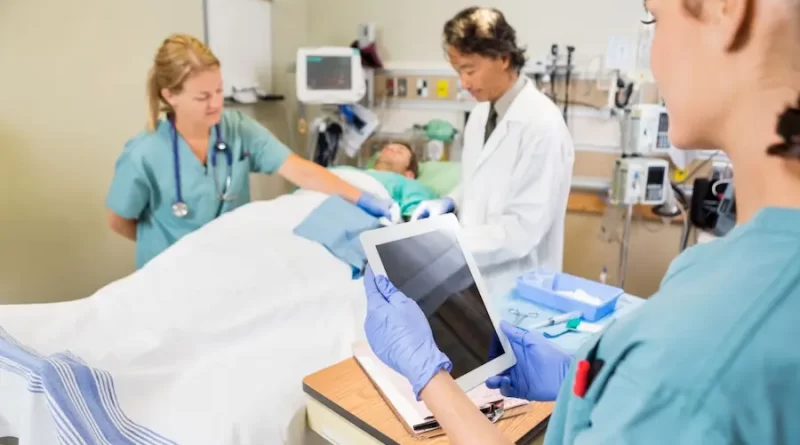Manual Handling in Healthcare: Best Practices for Patient Safety
Manual handling in healthcare is an integral aspect of patient care. It involves the physical movement and support of patients in various clinical settings. While this is an essential part of healthcare delivery, it also presents risks to both patients and healthcare workers. In order to ensure patient safety and the well-being of healthcare professionals, it is imperative to establish best practices in manual handling. This article will explore the importance of manual handling in healthcare, the associated risks, and the crucial role of manual handling courses and refreshers in maintaining a safe working environment.
Understanding Manual Handling in Healthcare
Manual handling encompasses a wide range of activities, including lifting, lowering, pushing, pulling, and carrying patients. Healthcare workers engaged in manual handling tasks are at risk of developing musculoskeletal disorders (MSDs), which can lead to long-term disabilities and absenteeism. Patients, on the other hand, are vulnerable to injuries such as falls and pressure ulcers if not handled correctly.
Risks Associated with Manual Handling
Manual handling is a fundamental yet high-risk activity in various industries, particularly healthcare, where workers routinely lift and move patients. Improper techniques can lead to severe injuries, affecting both patients and healthcare professionals. Strains, sprains, and musculoskeletal disorders are common among those engaged in manual handling tasks. Moreover, inadequate practices can compromise patient dignity and comfort.
Musculoskeletal Disorders (MSDs)
The physical strain associated with manual handling tasks can lead to various MSDs, including back pain, herniated discs, and repetitive strain injuries. These conditions can significantly impact the quality of life for healthcare workers.
Back Injuries
Back injuries, particularly lower back injuries, are prevalent among individuals engaged in manual handling tasks. Lifting heavy objects or patients improperly or without proper body mechanics can lead to herniated discs, slipped discs, and other back problems.
Shoulder and Neck Injuries
Repeated lifting or carrying of heavy loads can strain the shoulder and neck muscles, potentially leading to conditions like rotator cuff injuries and neck pain.
Repetitive Strain Injuries (RSI)
Consistently performing the same manual handling tasks can result in RSI, which involves pain and damage to tendons, nerves, muscles, and other soft tissues. Carpal tunnel syndrome is a well-known RSI affecting the wrist and hand.
Joint Injuries
Manual handling tasks can also put excessive stress on joints, especially the knees and hips. Over time, this stress can lead to joint injuries and conditions such as osteoarthritis.
Slips, Trips, and Falls
While not directly related to lifting, manual handling often involves navigating through work areas with obstacles. Carrying heavy loads can affect balance, increasing the risk of slips, trips, and falls, which can result in various injuries.
5 Best Practices for Safe Manual Handling
- Assessment and Planning
Before engaging in any manual handling task, healthcare workers should conduct a thorough assessment of the situation. This includes evaluating the patient’s mobility, weight, and any potential risks. A clear plan should be established, considering the safest and most efficient way to perform the task.
- Use of Handling Aids
Utilizing appropriate handling aids, such as hoists, transfer boards, and slide sheets, can greatly reduce the physical strain on healthcare workers and minimize the risk of injury to patients. These aids should be readily available and regularly inspected for safety.
- Teamwork and Communication
Effective communication among healthcare team members is essential in ensuring safe manual handling. Clear instructions should be given, and roles should be assigned to each team member involved in the task. This helps in synchronizing movements and preventing accidents.
- Proper Body Mechanics
Healthcare workers should be trained in correct body mechanics, including maintaining a neutral spine, bending at the knees, and using the legs to lift rather than the back. This foundational knowledge is crucial in preventing MSDs.
- Regular Training and Education
Continuous education and training in manual handling techniques are paramount in maintaining a safe working environment. Healthcare workers should participate in comprehensive manual handling courses to stay updated with the latest best practices.
The Role of Manual Handling Courses
Manual handling courses provide healthcare workers with the necessary knowledge and skills to perform manual handling tasks safely and effectively. These courses cover a range of topics, including risk assessment, proper handling techniques, and the use of handling aids. Additionally, they address specific considerations for different patient populations, such as pediatric and elderly patients.
Manual Handling Refresher Course
Given the evolving nature of healthcare practices, it is crucial to periodically refresh and update manual handling skills. Manual handling refresher course provided by Skills Training College serves as a valuable tool in reinforcing best practices and introducing any new guidelines or technologies that may have emerged since initial training.
The Takeaway
Manual handling is an integral part of healthcare, but it comes with inherent risks that can jeopardize patient safety and healthcare worker well-being. To mitigate these risks, healthcare facilities must implement best practices that prioritize proper training, equipment, and a culture of safety. Manual handling courses for healthcare workers are the cornerstone of safe practices, providing them with the knowledge and skills they need.
Regular manual handling refreshers are equally important, ensuring that healthcare professionals maintain their skills and stay informed about the latest advancements in the field.
By investing in manual handling training and refreshers, healthcare facilities can create a safer environment for patients and healthcare workers alike, ultimately enhancing the quality of care provided and reducing the risk of injury.

